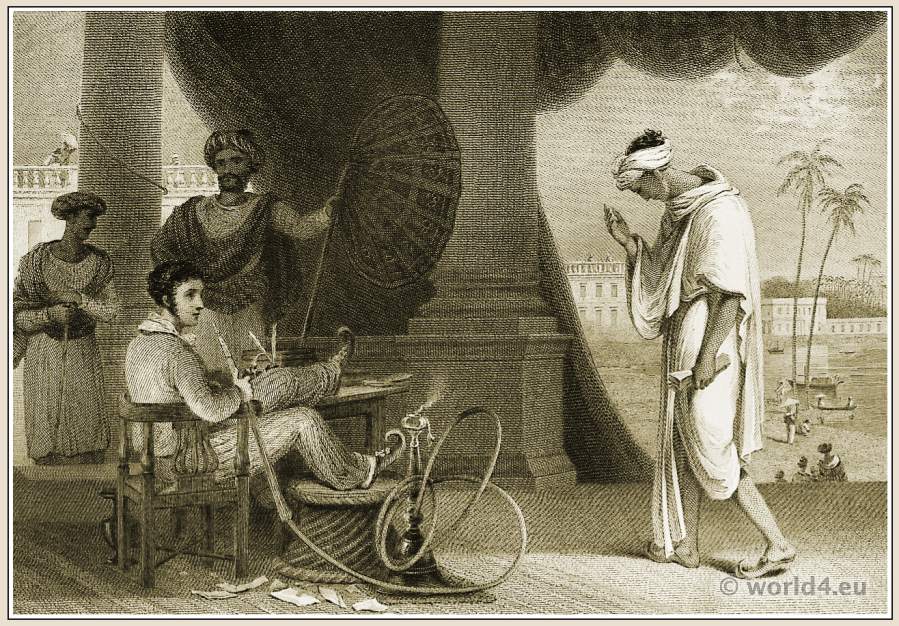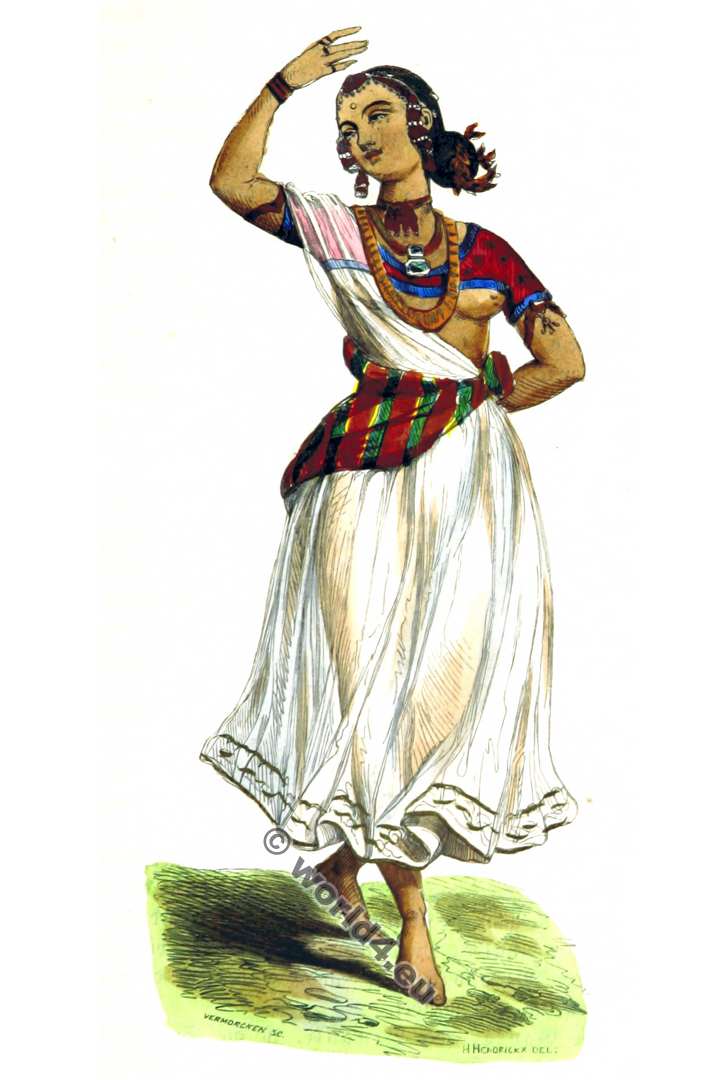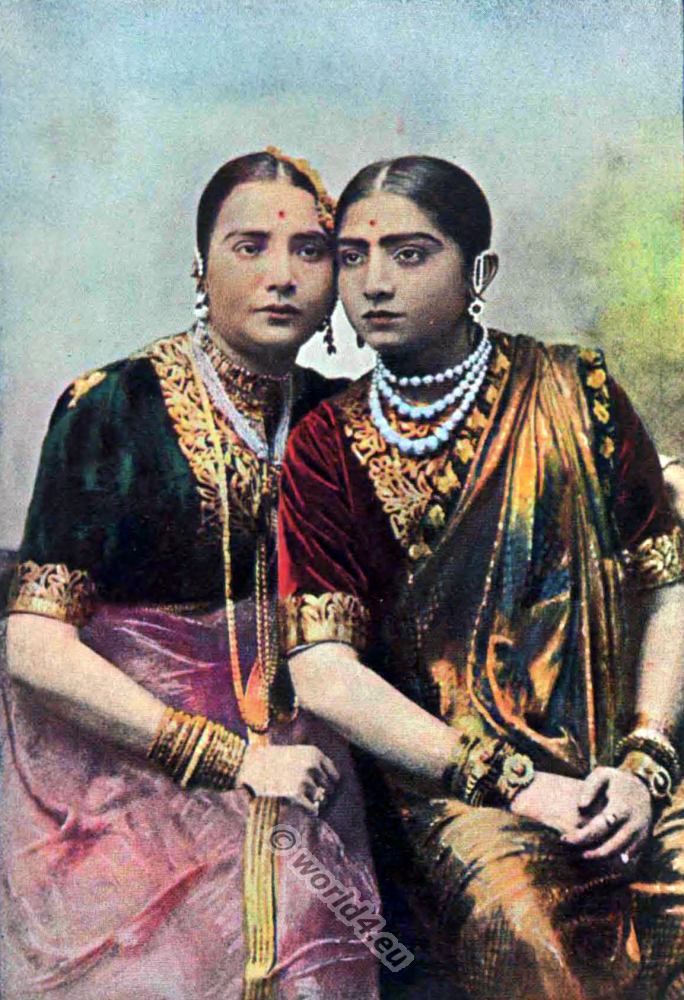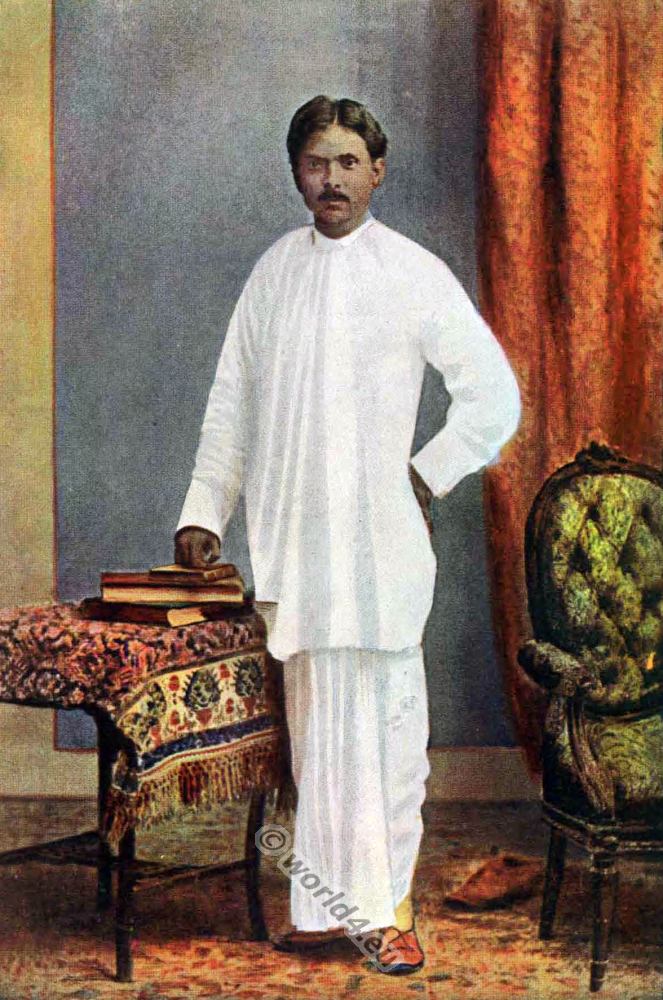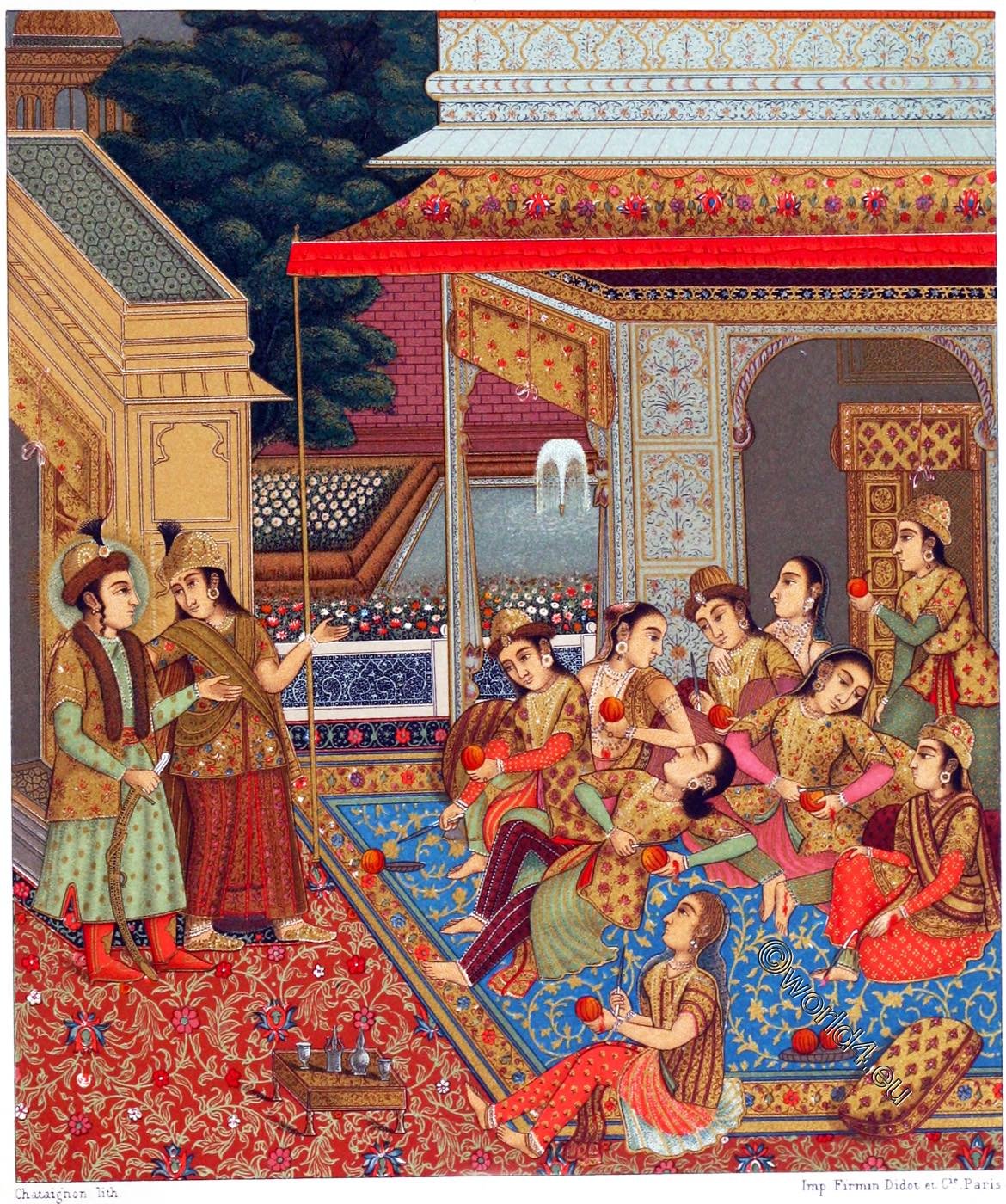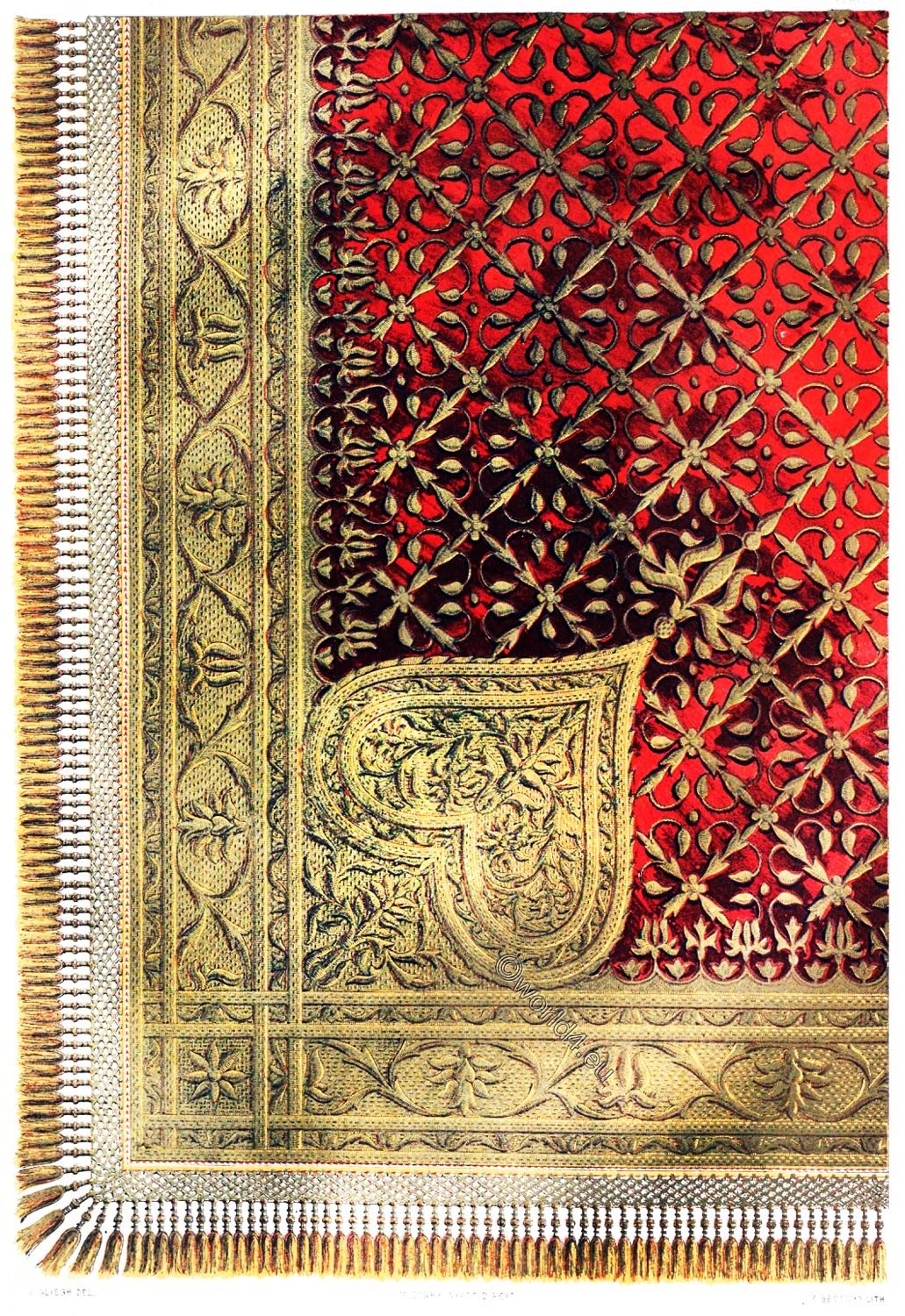How to wear an Indian Sari? The method of draping.
A sari for beautiful draping has to be six yards long and forty-five inches wide. To ensure a graceful fall the texture of the material is important. There is, normally for a traditional sari, whether it is of five, six, eight or nine yards, a narrow border at the two lengthwise edges, a decorated broad border or “pallav” breadthwise at one end and a smaller or “keel pallav” at the other end.
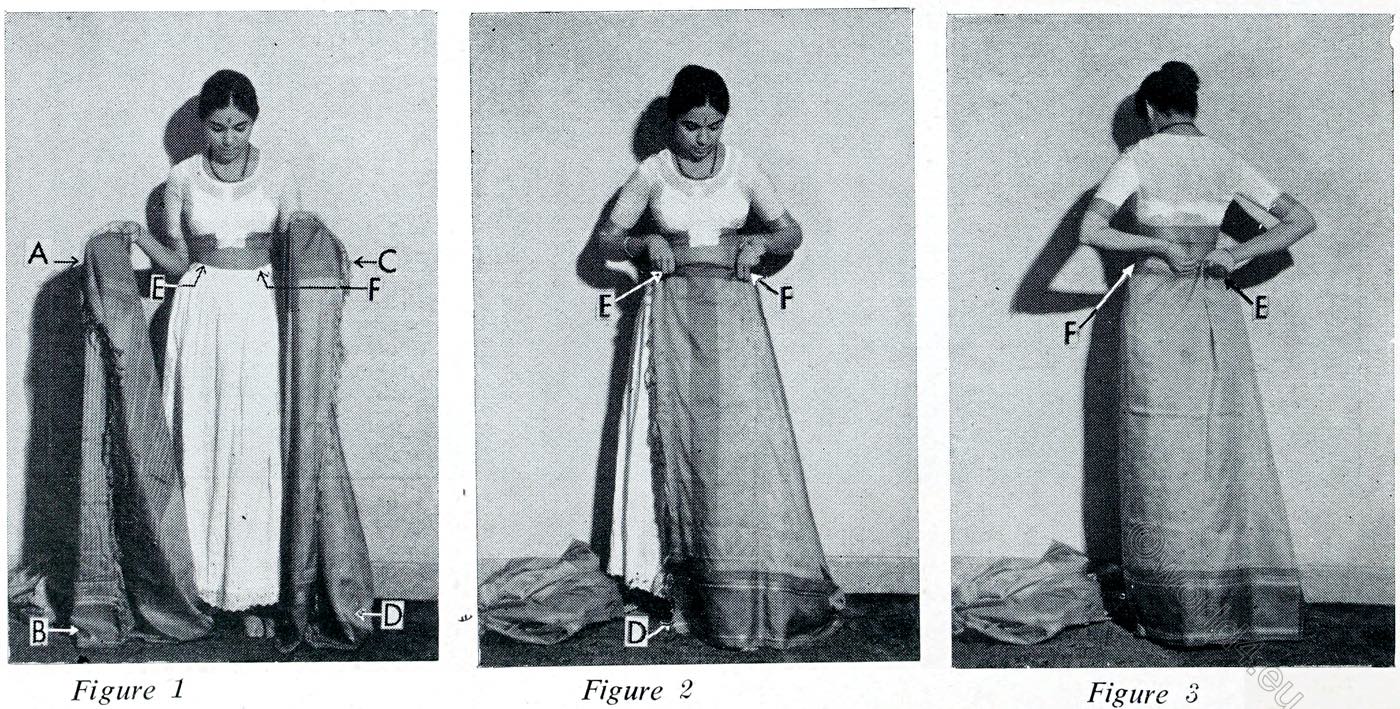
Fig. 1. Note the two “pallavs” and the position of the sari. The under garments besides the skirt and choli may be according to one’s liking and comfort. The petticoat or skirt should flow from the waist down to the ankles. The petticoat should be tied firm at the waist by means of the tape. The gathers of the petticoat at the waist should be few and the width at the hem should be from 2 to 2½ yards. The material selected should match the sari.
Fig. 2. Tuck in point C and E, cover the navel and go round the waist tucking in all the time. Stop at F and turn round. Allow the sari to hang an inch or two below the petticoat.
Fig. 3. Tuck in the sari with a few gathers, as shown, at the back of the waist and go on to point E. Tuck in again. You have now lined the petticoat with the “keel pallav” and a portion of the sari comprising roughly a yard of the sari from E to E again.

Fig. 4. Adjust the length of the “pallav” from finger tip to finger tip, as shown: points A to G. The sari should be taken loosely over the shoulders for adjustment.
Fig. 5. Tuck in point G at F. You have now two loose portions of the sari from E to F and F to A.
Fig. 6. Gather up from points A to B in pleats of 3-4 inches each.
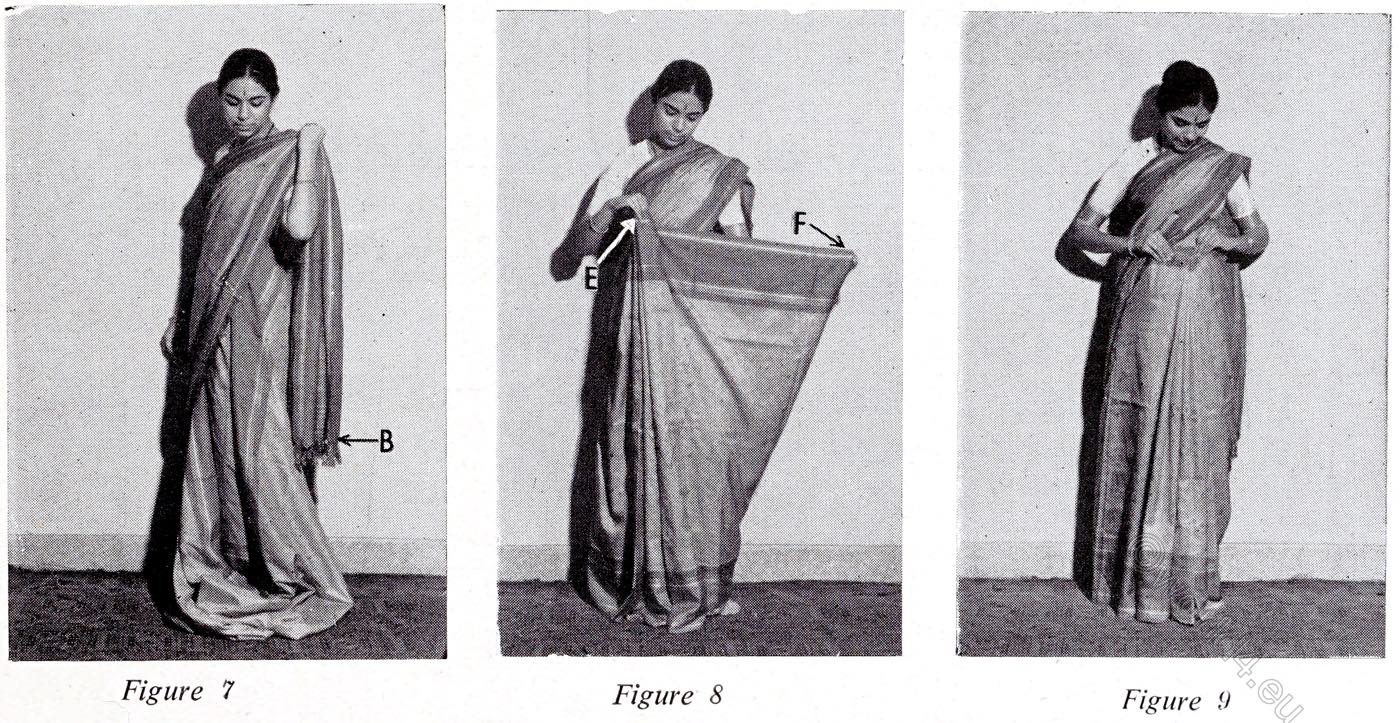
Fig. 7. Veil yourself with the loose portion of the sari throwing the “pallav” end over the left shoulder.
Fig. 8. Gather up the portion from E to F, as shown, with pleats or Nivi of 4-5 inches each.
Fig. 9. Tuck them in firmly at the navel.
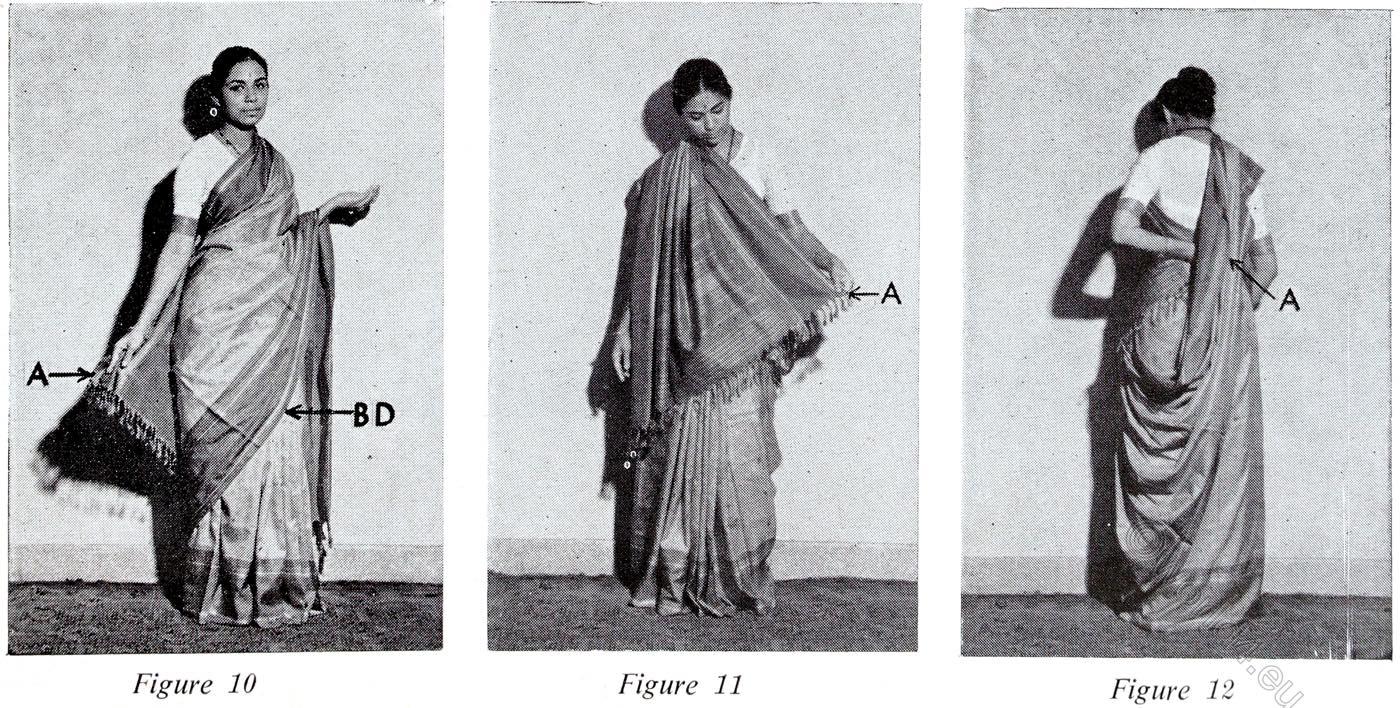
Fig. 10. See that the sari flows evenly at the feet all round and allow a portion of BD top to flow from the left shoulder or arm to the right knee gracefully.
Gujarati Style.
Fig. 11. To drape according to the Gujarati style, follow instructions tup to Fig. 4. Leave the sari over the shoulder as in Fig. 5, but allow twelve or eighteen inches more for the pallav.
Tuck in the front pleats or Nivi as in Figs. 8 and 9.
Fig. 12. Bring the gathered “pallav” over the right shoulder from behind. Tuck in point A at the centre of the back of the waist.
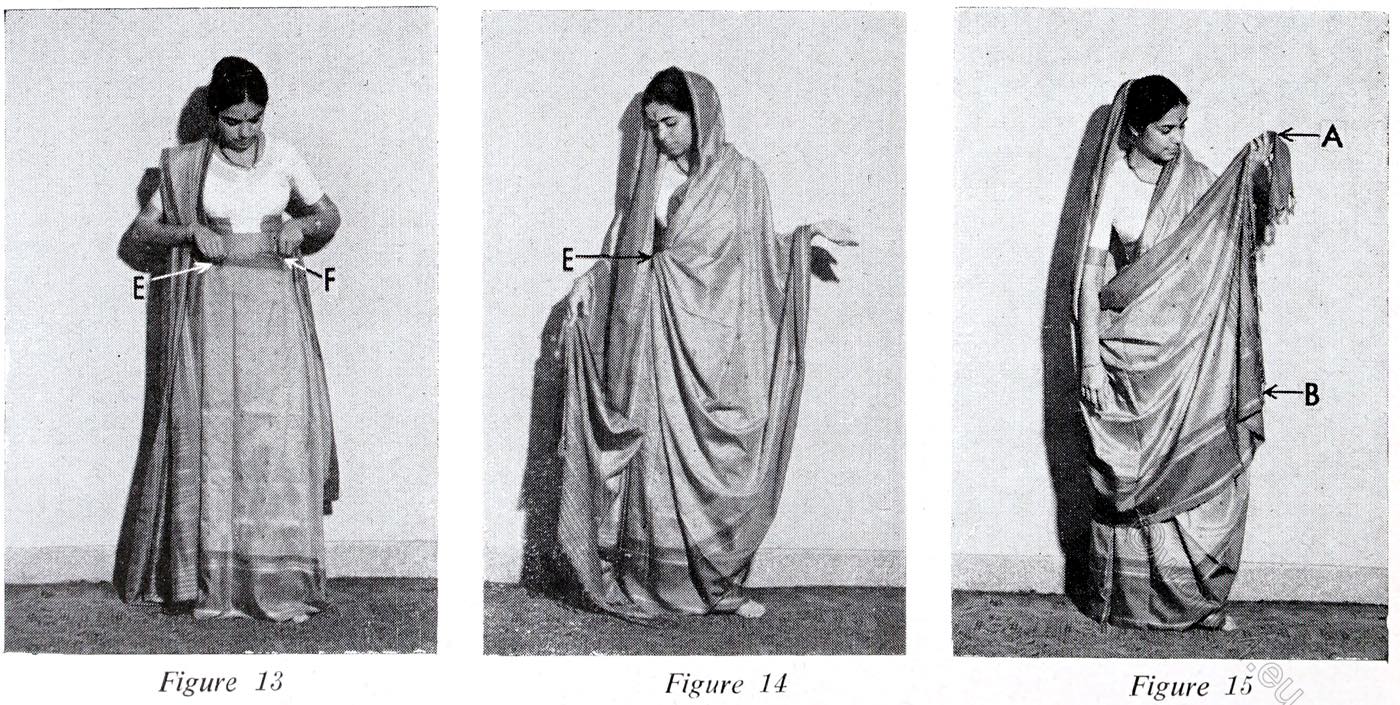
Bengali Style
Fig. 13. Follow instructions up to Fig. 4. Make broad pleats from E to F and vice versa, three on each side, tucking them in firmly.
Fig. 14. Take loose portions of sari from E after the third pleat up the shoulder and over the head.
Fig. 15. Bring end A from under the right arm and drape it over the left shoulder. Point B will flow over the left knee.
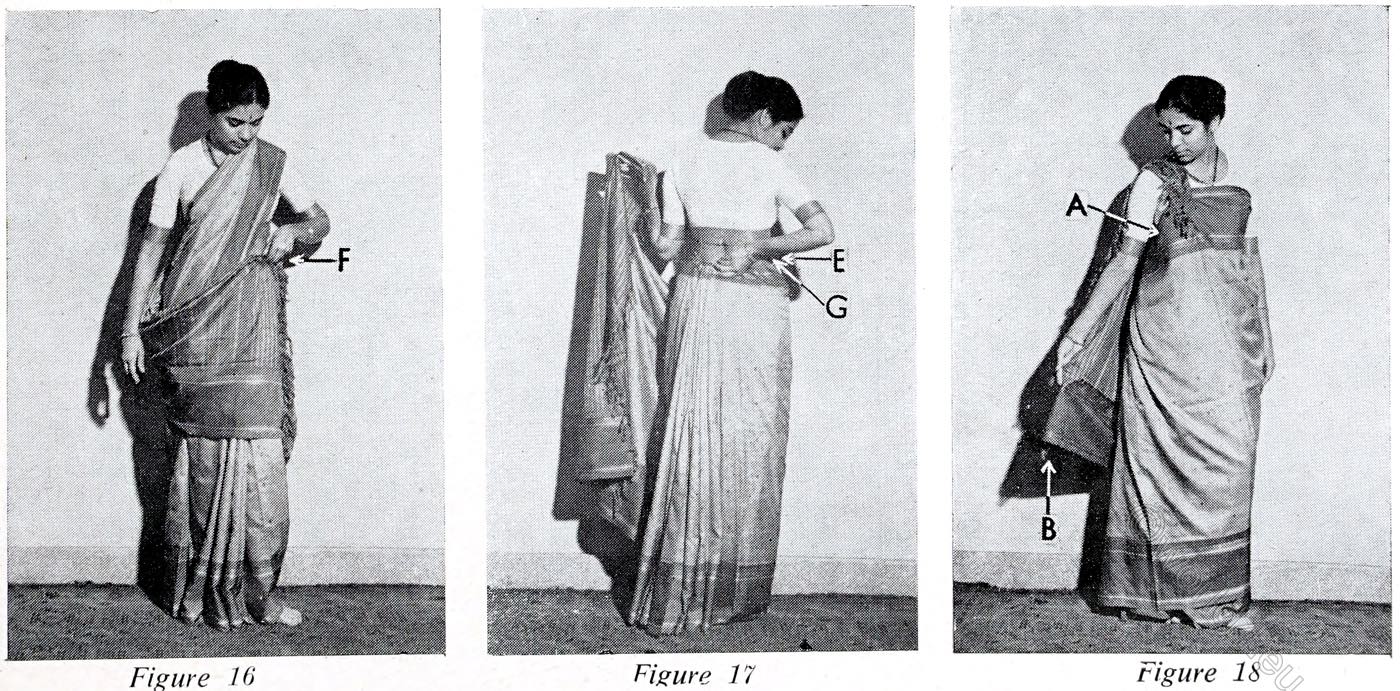
Kalakshetra Style.
Fig. 16. Follow instructions up to Fig. 8, but leave for the pallav end from A to G one and a half times that of A to G, as in Fig. 5. Secure the centre of pallav and A to B. Tuck it in at F bringing the pallav forward and allowing it to drape in two triangular shapes over the knees.
Coorg Style
Fig. 17. Follow instructions up to Fig. 3. Tuck in by pleats of 4 to 5 inches each at the back as in Fig. 3, instead of in front, the loose portion up to G.
Fig. 18. Take the pallav end from point G below the right arm, above the chest below the left arm, to the back and bring point A over the right shoulder in front in a little veil and secure with a brooch or pin.

Sakacha or Maharashtrian Style.
Fig. 19. For this style the sari has to be nine yards long and fifty- two inches wide. A skirt or petticoat is not necessary. Instead of tucking in point C at E, as in Fig. 3, secure the keel pallav end firmly round the waist by tying with a firm knot points C and E to form a petticoat.
Follow instructions in Figs. 5, 6, 7 and 8, making pleats of 4-5 inches up to point G, but, instead of tucking in the Nivi, roll them forwards adjusting the length of the sari and securing them under petticoat flap E — F.
Fig. 20. Divide the gathers into halves at point H.
Fig. 21. Take central end H at the bottom through the legs to the back.

Fig. 22. Gather H into pleats of 2-3 inches and tuck in the “sakacha” H firmly at the centre of the back of the waist. Fold in the sari around the calves neatly and secure the inside ends I with garters.
Fig. 23. Front view.
Related
Discover more from World4 Costume Culture History
Subscribe to get the latest posts sent to your email.


